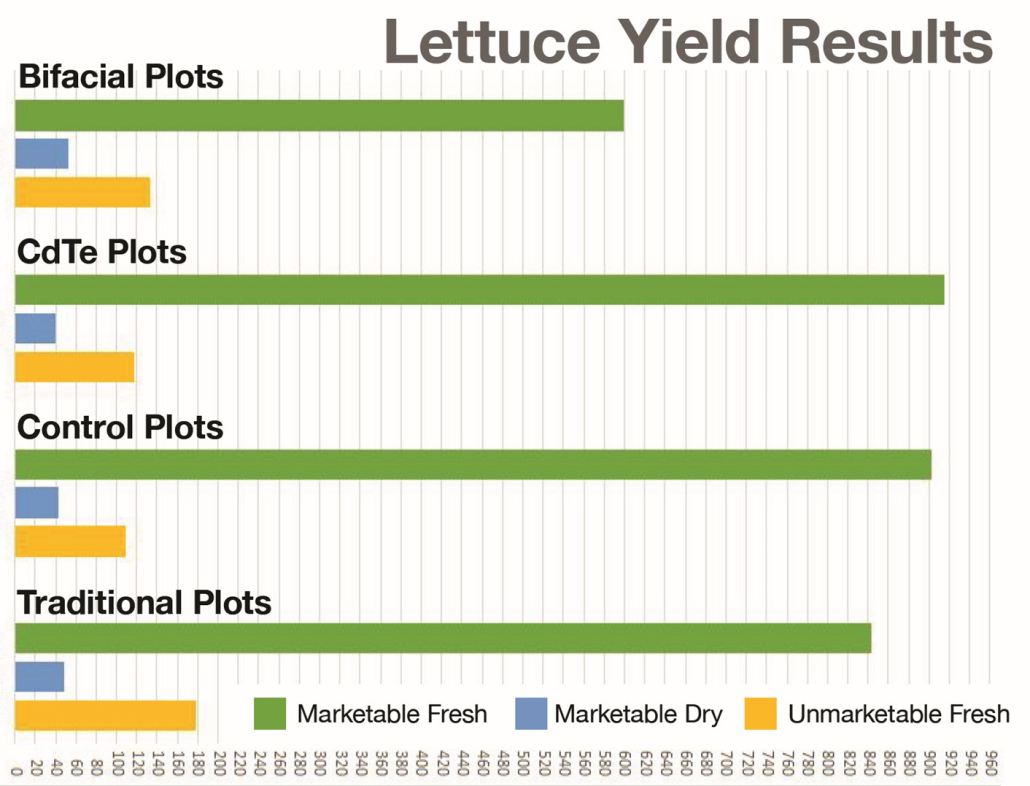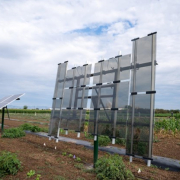Case Study: Sandbox Solar Agrivoltaics Research Site at Colorado State University’s ARDEC South

Agriculture Type: Specialty crop research farming
Project Type: Small commercial net metering agrivoltaic system
Project Size: 11.4kW-AC
Project Design: Solar pole mount structure, SolarEdge Inverter, 72-cell bifacial solar panels, 72-cell opaque polycrystalline solar panels, thin film 40% semi-transparent solar panels
Location: Fort Collins, CO
Developer and Contractor: Sandbox Solar
Sandbox Solar is a solar energy developer and Engineering, Procurement, and Construction (EPC) company located in Fort Collins, Colorado. The company installs over 1MW of solar annually and has conducted agrivoltaic research and development since 2018 in a joint effort with Colorado State University.
Sandbox Solar received a USDA Small Business Innovative Research Grant, Phase I. This grant funded the design and development of the novel agrivoltaic research plot located at Colorado State University’s Agricultural Research Development Education Center (ARDEC South) in Fort Collins. The system was installed in May 2019 and is comprised of repetition plots of various treatments for scientific significance. The system includes three plots of open-field control plots, three plots of 72-cell bifacial solar panels, three plots of 72-cell opaque polycrystalline solar panels, and three plots of thin film 40% semi-transparent solar panels.


What Have We Learned?
The research and development team has learned that many crops respond very well to partial shade conditions without hindering growth. The partial shade from the panels has led to increased soil moisture and decreased ambient temperature, allowing the crops to avoid heat and drought stress that they may experience in full sun conditions. Fort Collins’ semi-arid climate and intense UV radiation along the Front Range can be a challenging place for certain crops to grow.
The team is continuing to model and research various panel types and layouts. Within the next two years, they hope to find the ideal ratio of transparency to power generation. Thin-film and semi-transparent solar technologies are expanding and progressing every year, leading to new potential solutions.

How Was Last Year’s Growing Season?
The team collected a lot of data in 2021, including measurements of temperature, Photosynthetically Active Radiation (PAR), light, and soil moisture throughout the growing season. They also collected harvest data on peppers, tomatoes, lettuce, and kale. Results indicate that all of these crops performed very well in partial shade conditions.


Learn more about Sandbox Solar’s Agrivoltaic Research & Development here:



